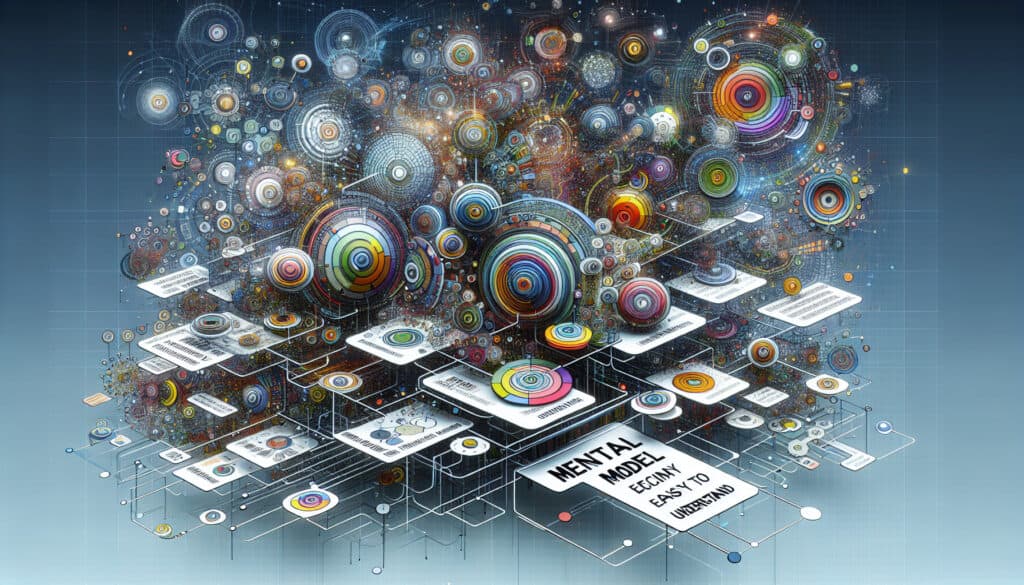To visualize a user’s understanding of a system or process.
- Methodologies: Customers & Marketing, Economics, Human Resources, Project Management
Mental Model Diagrams

Mental Model Diagrams
- Customer Experience, Design Process, Design Thinking, Human-Centered Design, Interaction Design, Usability, Usability Testing, User experience (UX), User-Centered Design
Objective:
How it’s used:
- A diagram that represents a user's belief system about how a product or system works. It helps designers understand the user's expectations and design a more intuitive and user-friendly product.
Pros
- Helps to design more intuitive and user-friendly products; Can identify areas where the user's mental model differs from the actual system.
Cons
- Can be time-consuming to create; The results are based on a small sample of users and may not be representative.
Categories:
- Customers & Marketing, Product Design
Best for:
- Designing a new software application or website to be more intuitive and user-friendly.
Mental Model Diagrams can be effectively applied in various project phases, particularly during the early stages of product development when understanding user perceptions and expectations is paramount. Typically used in industries such as software development, web design, and consumer electronics, these diagrams allow design teams to visualize how users conceptualize the operations and features of a system. Participants in this process should include product designers, UX/UI specialists, and stakeholders who have a deep understanding of the target audience, making it imperative to gather qualitative data through user interviews or usability testing. By mapping out users’ beliefs and assumptions about a product, design teams can pinpoint discrepancies between the user’s mental model and the actual workings of the system, which may lead to usability issues. This methodology can be particularly beneficial in industries that require complex system interactions, such as healthcare technology or finance, where a clear understanding of user expectations can significantly enhance user satisfaction and adoption rates. An example application could be creating an e-commerce platform where customers have specific expectations about checkout processes. If designers can visualize user assumptions, they can design a smoother, more predictable experience that caters to user expectations, thereby increasing conversion rates and reducing cart abandonment. Through this collaborative approach, teams can ensure that their final product reflects user needs more accurately, ultimately leading to a more engaging and user-friendly experience.
Key steps of this methodology
- Identify user tasks and goals related to the product or system.
- Create a high-level overview of the system’s functionality as perceived by users.
- Map out the user’s beliefs and expectations regarding how the product works.
- Compare user mental models with the actual system functionalities.
- Identify discrepancies and areas for improvement in design and usability.
- Refine design concepts based on findings from the mental model analysis.
- Iterate on the design with user feedback, ensuring alignment with user expectations.
Pro Tips
- Conduct user interviews to uncover latent mental models that may not be immediately apparent; this can guide design choices that align closely with user expectations.
- Utilize card sorting methods to understand how users categorize information, which can inform navigation structures and labeling conventions.
- Create iterative prototypes and conduct usability testing focused on specific mental model assumptions; observe where users struggle to align their expectations with the interface.
To read and compare several methodologies, we recommend the
> Extensive Methodologies Repository <
together with the 400+ other methodologies.
Your comments on this methodology or additional info are welcome on the comment section below ↓ , so as any engineering-related ideas or links.
Historical Context
1986
(if date is unknown or not relevant, e.g. "fluid mechanics", a rounded estimation of its notable emergence is provided)

Related Posts
Monte Carlo Simulation
Model-Based Testing
Model Checking
Mixed Methods Research
Mistake Proofing (Poka-Yoke)
Mission Profile Testing